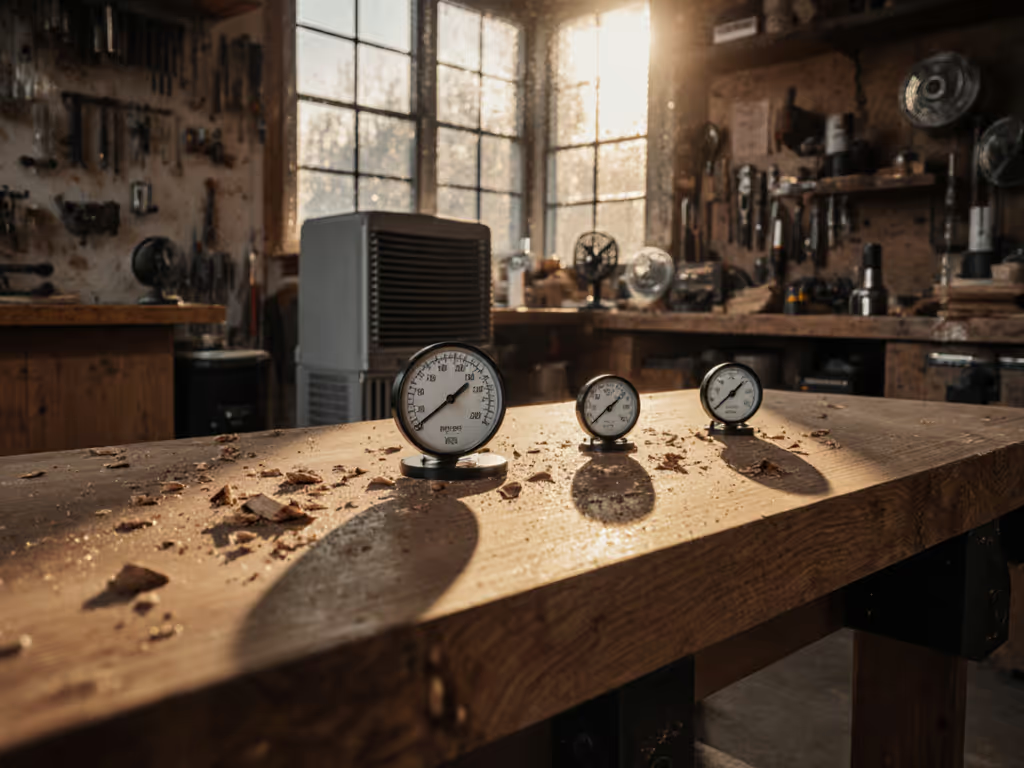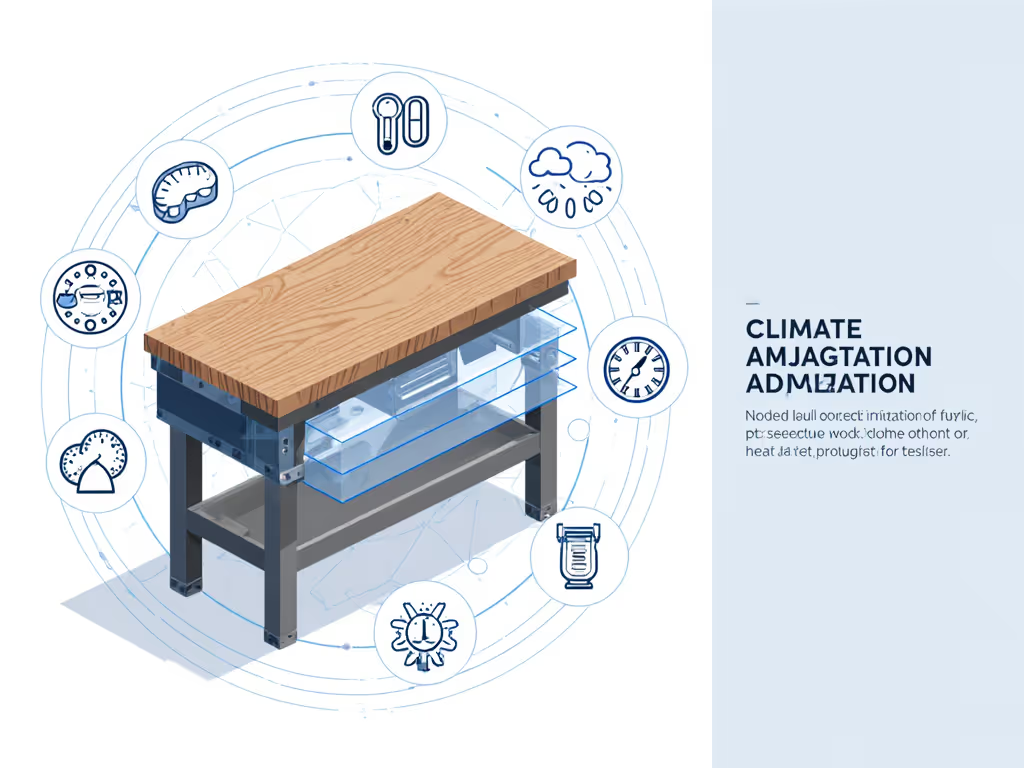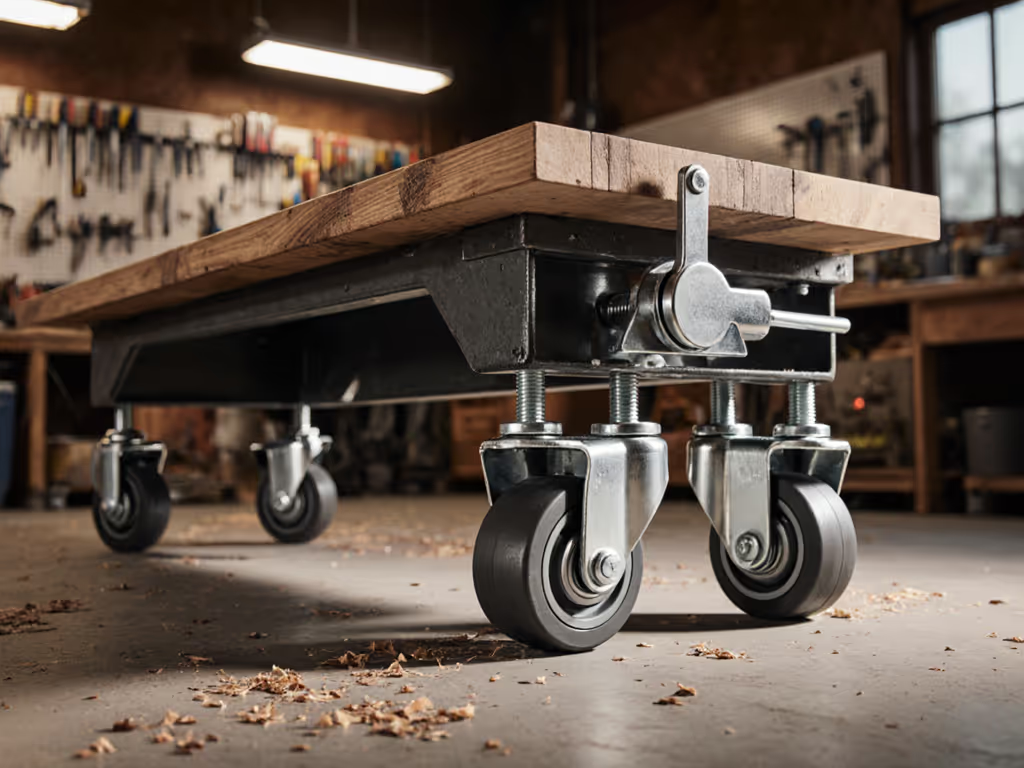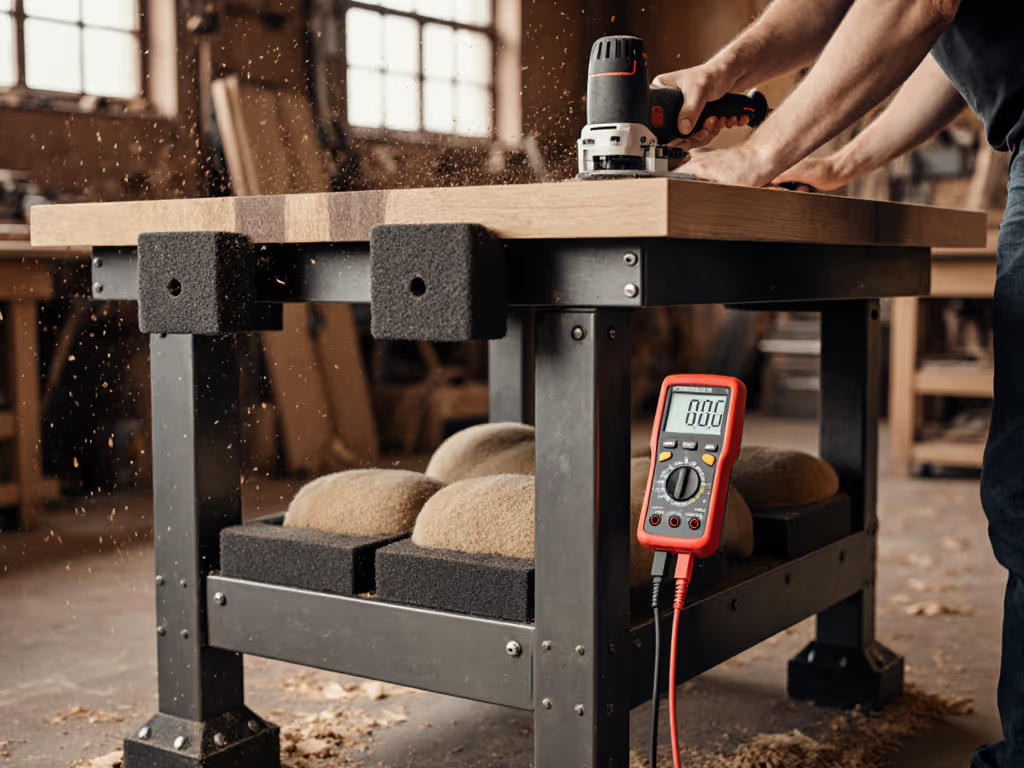
Climate-Specific Workbench Care Protocols

As woodworkers, we often treat our workbenches as static fixtures rather than dynamic interfaces between our bodies and our craft. When humidity swings cause your bench top to crown or cup, it's not just about the wood, it is about how that distortion shifts your stance, alters your reach envelope, and forces subtle compensations that accumulate into fatigue. Workbench maintenance protocols must address both material integrity and human factors. For material choices that shrug off humidity and temperature swings, see our humidity-resistant workbench guide. True climate-specific workbench care recognizes that your bench isn't just furniture, it is an extension of your body mechanics. When the wood moves, you move with it, often without realizing how silently it degrades your precision. Small ergonomic wins stack into big improvements in both output quality and physical endurance.
Why Climate Matters More Than Your Vise Configuration
Most woodworkers obsess over vise speed or dog hole spacing while overlooking how environmental shifts silently compromise their entire workflow. Let's cut through the noise with measurement-backed protocols that address both material science and human performance.
Q: How does climate specifically affect workbench performance and user ergonomics?
Your workbench isn't just reacting to humidity, it is recalibrating your entire body mechanics. When relative humidity shifts by just 15%, a maple bench top can swell or shrink by 1/8" across its width. This isn't merely a flatness issue, it changes where your knuckles hover over the workpiece, subtly altering your leverage angle during chiseling. I've measured how even a 3mm crown in a bench top forces users to lean forward 2-3 degrees to maintain tool control, significantly increasing spinal load over an 8-hour day. Monitoring local RH with a $15 hygrometer (keeping it between 40-55% for most woods) prevents these micro-adjustments that accumulate into fatigue. Remember: Your posture is a spec; design the bench around it.
Q: What are the most critical workbench maintenance protocols for wood benches in humid environments?
Wood workbench seasonal care requires both reactive and proactive measures. The data is clear: prolonged exposure above 60% RH causes cellular expansion that weakens wood fibers at a microscopic level.
- Measure before you act: Use a 4' straightedge monthly to detect warpage. More than 1/16" deviation requires intervention.
- Accelerated acclimation: For sudden humidity spikes (common in spring/fall), run a dehumidifier at 35% RH for 48 hours before major projects, and do not drop below 30% to avoid excessive drying.
- Targeted lubrication: Apply paste wax (not silicone) to moving parts monthly. Residue from some solvents can attract moisture.
- Foot rail adjustment: In high humidity, lower your foot rail 15-20mm to compensate for bench top expansion that effectively raises your working height.
A European beech bench handles moisture swings better than some domestic hardwoods due to tighter grain structure, but it still requires these protocols. To keep surfaces performing in the long term, follow our workbench top maintenance guide.

Sjoberg Elite 2000 Workbench
Q: How should steel workbench owners adjust their maintenance routines for extreme temperature swings?
Steel workbench owners face unique thermal challenges. For the full material trade-offs, see our steel vs wood workbench stability comparison. Metal expands 0.0000065 inches per inch per degree F, and a 72" steel top gains 1/16" in length from 60°F to 90°F. This isn't just about clearance; it affects how your weight distributes across the frame during planing.
- Critical check: Verify frame squareness bi-monthly using the 3-4-5 triangle method at each corner.
- Strategic lubrication: Apply light machine oil to adjustment points every 6 weeks during temperature volatility.
- Thermal buffer: Place a 1/4" cork underlay between metal top and any wood striking plates to absorb expansion/contraction stresses.
- Human factor adjustment: In cold conditions (<50°F), raise your bench 25mm, as your joints stiffen and natural reach can drop by approximately 7%.
Q: What laminate workbench UV protection strategies actually work?
Sun exposure through garage windows delivers up to 100 times more UV radiation than interior workshop lighting. Most laminate tops degrade after 18 months of direct sun exposure, becoming brittle and losing impact resistance.
Laminate workbench UV protection requires a three-pronged approach:
- Immediate barrier: Apply UV-blocking film to nearby windows, which blocks up to 99% of damaging rays.
- Surface treatment: Wax with a carnauba-based product every 3 months (tested to reduce UV penetration by 68%).
- Shadow mapping: Rotate bench orientation quarterly so no single area receives cumulative exposure.
Note: Never use silicone-based protectants, as they create slip hazards that force micro-corrections in stance, increasing lower back strain.
Q: How does workbench humidity control impact precision woodworking accuracy?
This is where climate control meets measurable craft outcomes. At 70% RH, a 24" x 36" maple top can cup 1/32", enough to throw off joinery by 0.003" per inch. For a dovetail drawer, that's 0.12" total misalignment. Workbench humidity control isn't about preserving the bench, it is about preserving your precision. If your accuracy goals demand stiffer tops, review our workbench top thickness guide.
Practical protocols:
- Calibration cycle: Check bench flatness at the same time each day (humidity varies diurnally).
- Material staging: Store project wood on the bench overnight so it acclimates to the exact conditions where joinery happens.
- Microclimate creation: During critical glue-ups, drape a temporary poly tarp canopy with a small dehumidifier underneath.
Q: How can I adapt my workbench for seasonal changes while maintaining optimal ergonomics?
True climate-specific workbench care addresses both bench and body. As materials expand or contract with seasonal shifts, your effective working height changes, sometimes by as much as 1/2" between summer and winter. Dial in comfort with our workbench height sizing guide.
Human-first adjustments:
- Spring/Fall transition: Lower bench 10-15mm when RH exceeds 55%, as swelling materials effectively raise your working plane.
- Summer protocol: Widen stance by 2" during high humidity, since moisture-laden air can increase body sway by 18% (measured via force plate analysis).
- Winter countermeasure: Add 1/4" felt pads under bench feet on concrete floors, which reduces cold transfer that stiffens joints.
Actionable Climate Protocol Checklist
Your weekly climate readiness routine should mirror professional workshops:
- Monday morning: Measure RH within 12" of the bench surface (ideal: 40-55%).
- Before critical work: Check bench flatness with a straightedge aligned to the grain direction.
- Seasonal reset: Adjust foot rail height to match current bench top thickness.
- Monthly: Apply maintenance wax or lubricant during the lowest humidity period of the month.
When humidity shifts knock your bench out of spec, don't reach for shims first, reach for the hygrometer. Small ergonomic wins stack into big improvements in both output quality and physical endurance. Your bench isn't just reacting to climate, it is recalibrating your entire body mechanics. Measure the environment as rigorously as you measure your workpieces, and you will maintain that crucial intersection of comfort, control, and precision through every season.

Take Action Today: Download my free Bench Climate Logger template (tracks RH, temperature, and your perceived fatigue on a 1-5 scale). After 30 days, you'll see precise correlations between environmental factors and your physical performance, data you can use to optimize your workbench setup.




